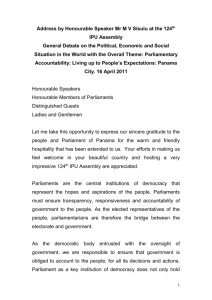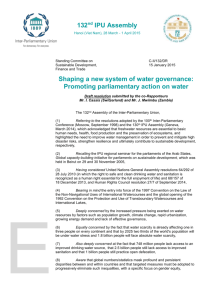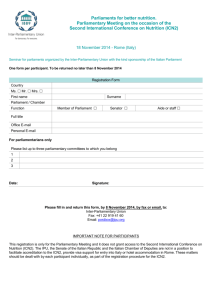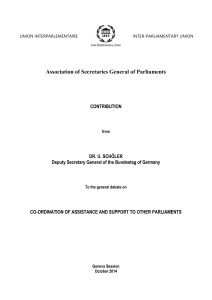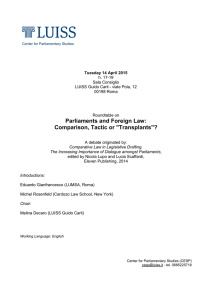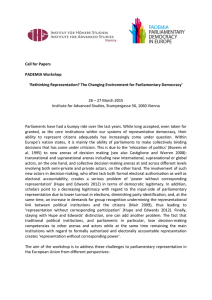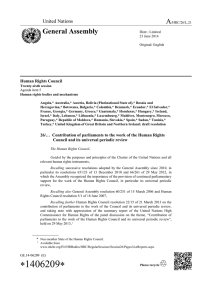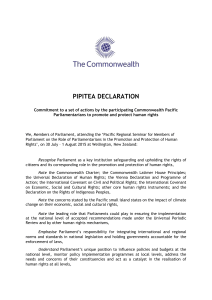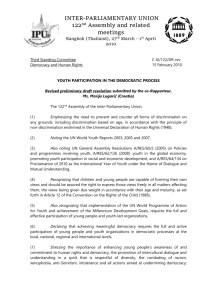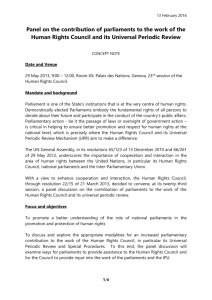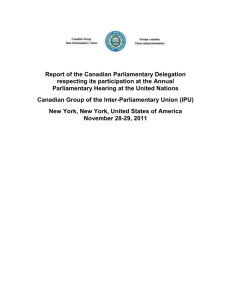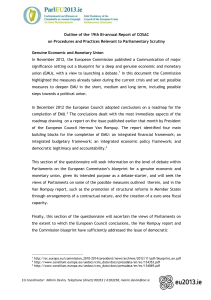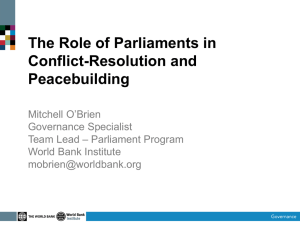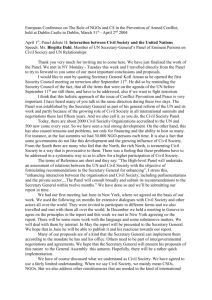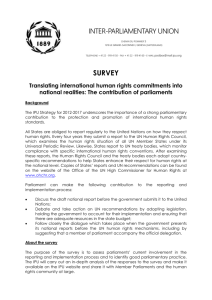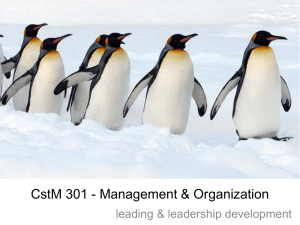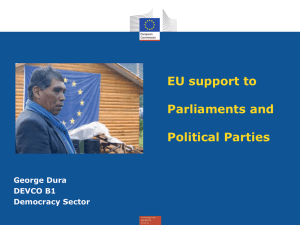Dr Andy Williamson presentation ( PPT 2.01 MB)
advertisement
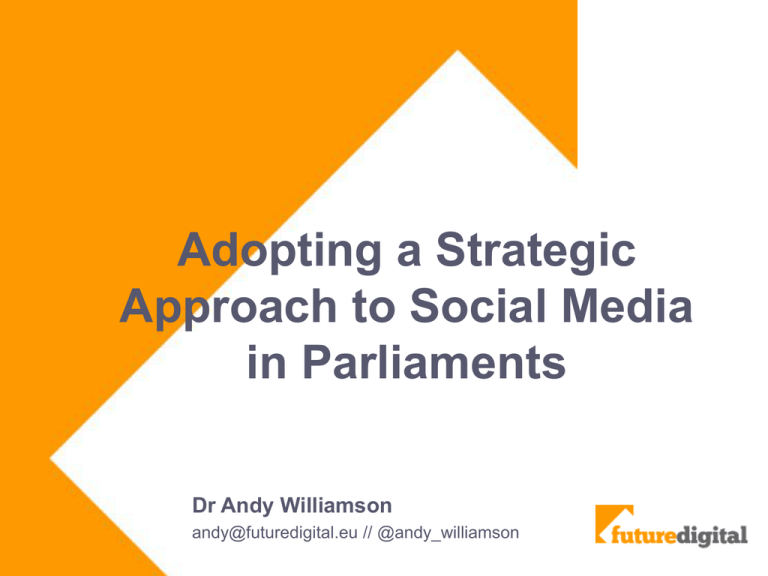
Adopting a Strategic Approach to Social Media in Parliaments Dr Andy Williamson andy@futuredigital.eu // @andy_williamson Context • Social media are a new and effective way for parliaments to connect with the public, particularly young people; • Social media use is subject to existing codes of practice for communication and engagement; and • Social media are fast changing and dynamic spaces for networking and sharing. The Pros and Cons Pros Cons Creates space for dialogue Pushes you closer to the public Can build credibility and trust Opportunities for third-party syndication and support Viral distribution Cost-effective Better understanding of public opinion Real time monitoring Time to get information out is greatly reduced Can become core part of your communications strategy and central hub for engagement and dissemination Etiquette and protocols are different to other media Reputational risks if not authentic, honest and transparent Must be perceived as relevant to audience, not self Requires carefully tailored content Potential to move rapidly and beyond your control Recruitment is hard to predict and there is no guarantee productive dialogue will occur Social media are not short cuts to efficacy and principles of good communication still apply Uses of social media Information The provision of resources, background information, media partnerships and general information for the public. This includes sharing and promoting information about parliamentary activities, such as bills and motions being debated in the legislature, committee meetings, special events, visiting delegations and the tabling of reports. Education Activities, training materials and other resources for students and teachers. This includes providing easy, timely access to research and other parliamentary publications. Outreach Links to and partnerships with civil society, business communities and other groups, facilitating public access to parliament. Active channels to inform and connect with citizens, to solicit submissions and build interest in legislative business. This includes direct consultation with the public on legislation and policy and strategies to directly engage citizens in the work of the legislature. Engagement New set of rules • Social networks are less formal, less controlled, less rigid and more open. • They are less respectful of position, tradition and privilege and conversations evolve much more quickly than in the traditional media. • This can be challenging for formal institutions like parliaments. • But it can also be a powerful way to connect with people who would normally engage with parliaments. Plan for success • Authorisation • Personal use • Legal issues • Privacy • Facilitation • Crisis strategy • Engagement framework • Choosing the right platform • Evaluation and measurement Measuring the impact Engagement Amplification Reach How diverse is the group that communicates with you? What is the ratio of broadcasting to participation? How likely are you to be re-tweeted or shared? Does this come from a lot of different people or is it always the same few followers/fans? Is there a pattern between the type of content and increases in communication and new followers? How far does your content spread across the social network? Are you being added to lists and are those lists being followed? Churn Sentiment How many new followers in the period? How many lost followers in the period? Sentiment analysis is about identifying what is being said and the positivity or negativity in a debate – are people agreeing or disagreeing, supporting or opposing what you said. Above all • Good social media practice means listening, responding, asking and sharing; it’s about being an active participant in the network. • Social media is faster and fast changing; be prepared to experiment and don’t create barriers through over-regulation. IPU Social Media Guidelines for Parliaments www.ipu.org/english/surveys.htm futuredigital.eu/publications.html
